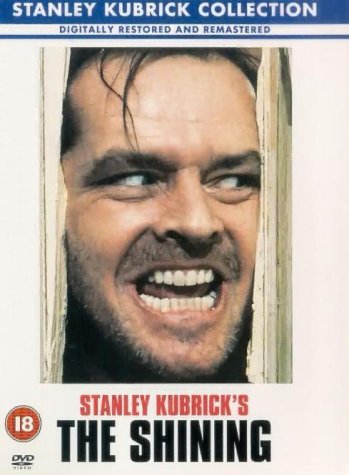 Stanley Kubrick’s obsession with directing was such that he wanted to not just make a genre picture but the best picture for that genre. His foray into horror gave us “The Shining,” which was an epic masterpiece that was built on tension and stellar performances.
Stanley Kubrick’s obsession with directing was such that he wanted to not just make a genre picture but the best picture for that genre. His foray into horror gave us “The Shining,” which was an epic masterpiece that was built on tension and stellar performances.
Kubrick was known for being a perfectionist and it was on this film that he broke the Guinness World Record for most single takes for one scene. However, when you take a closer look at his films, you will notice the work of art put into each shot. Take a still from any Kubrick film after 1968, and you will see a picture that is worthy of being placed in a museum. This craftsmanship and love of cinema is what makes “The Shining” one of the best films of all time.
Some controversy was made by Stephen King at the time of this film’s release because it was an extreme departure from his novel, which is a problem many authors had with Kubrick adaptations. Several decades later, King got his say in a mini-series, and it is great that audiences can compare both versions. The problem is that the mini-series does not create that visual and emotional terror that Kubrick’s 1980 version did.
The premise and names of the characters are taken directly from King’s novel. The Torrance family has had some trouble in the past and wants a fresh start. A position as a winter caretaker at the secluded Overlook Hotel seems like the perfect break from the world to reconnect with each other. The problem is that some eerie events have taken place there, and the last caretaker hacked up his family. Within one month’s time, the family slowly starts to notice some strange events with one member starting to slowly losing his mind.
The youngest, Danny Torrance, has a unique gift called “the shining,†which allows him to telepathically talk to other people. This unique ability allows him and only him to be aware of the horrors to come. The young Danny Lloyd is outstanding in this role, creating an endearing yet despondent character, whose persona is built on facial expressions and barely any dialogue. Most people know what “redrum†means now, but on a first viewing, the discovery of the significance behind Danny’s mantra is a great moment in cinema.
At 143 minutes, it is surprising that Kubrick doesn’t introduce us properly to the main character of Jack Torrance played amazingly by Jack Nicholson. We never see the normal side to this character and it isn’t long until he snaps. However, it is Nicholson’s frightening conviction that sells this picture. He is a demented human monster that is terrifying to watch and he hits every line of dialogue with the perfect tone. It is a treat to watch Nicholson and see his capabilities as an actor.
On an interesting side note, Kubrick had developed a project years earlier on Napoleon, whom he wanted Nicholson to play. Sadly, that project was never filmed, but Kubrick got to work with Nicholson to create this genuinely frightening movie.
Shelley Duvall and Scatman Crothers provide excellent supporting performances, but it is Lloyd and Nicholson that get to flex their acting muscles the most. Crothers is at one point set up to be the film’s hero, which “The Shining†spends a good 15 minutes developing, but doesn’t clearly define. Crothers’ character of Dick Hallorann is clearly defined in the novel, however, and one can see at this point how drastic the departure from King’s original truly is.
The eerie tone is enhanced by the dark cinematography. The colors of the hotel should be infused with brightness, but everything is toned down, making the Overlook Hotel one of the most depressing places imaginable.
The tension of Nicholson’s character losing his mind is set up when we experience him enjoying a party of consisting of dead people. The character is emotionally drained, and the audience doesn’t know what they are experiencing. Is this in his mind or is the hotel haunted?
Another great tension building moment is the bathtub scene in room 237. Nicholson’s performance ranges in this single scene from lust to disgust to denial. The audience is left in the dark as to why he is in denial and now you understand how the whole Torrance family feels through that one outtake.
What may interest some viewers is that they are not given direct answers to anything and the ending refuses to answer any questions. The audience is left with their own conclusions, which is why the film demands a repeat viewing.
“The Shining” is a masterpiece and testament to one of the great directors of our time. Kubrick’s career was composed of only 13 films and this may be the most audience friendly.

Leave a Reply